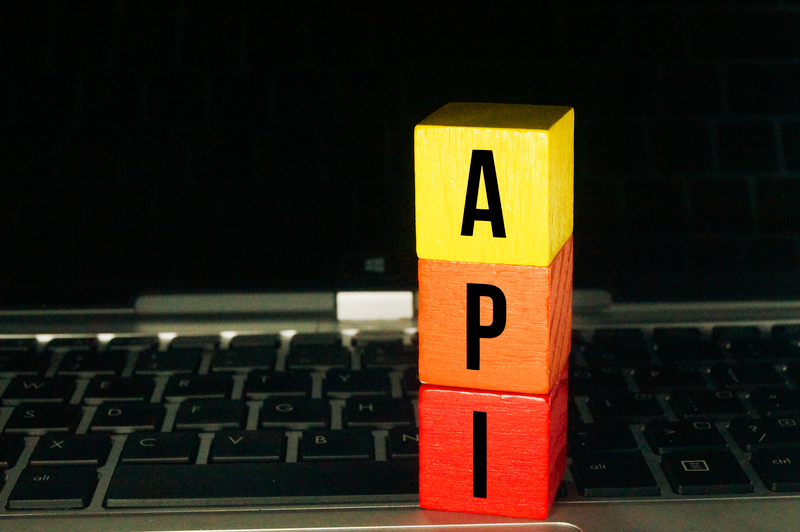Are you looking to streamline and optimize your software by integrating APIs? Is the complexity and inefficiency of managing multiple software components that don’t communicate well stealing away all your time? Are you feeling extremely overwhelmed by your custom software development process?
We’ve all faced these integration hurdles before. That’s why, leveraging our extensive experience in making technology work seamlessly, WillDom is here to guide you through simplifying your software architecture using API integration.
What Is API, in Simple Words?
In simple words, API, short for application programming interface, is a set of rules and protocols for building and interacting with software applications. It defines the methods and data formats developers should use when programming components that interact.
Imagine you’re sitting at a table in a restaurant with a menu of choices to order from. The kitchen is the part of the “system” that will prepare your order, but you don’t know exactly how the kitchen does its job. What you do know is that you can communicate your choices through the waiter, who is the intermediary that understands your request and tells the kitchen what to do. Once your food is ready, the waiter brings your food out to you.
In this example, the API is like the waiter. You, as the customer, are the user who is using the API. The menu provides the list of dishes you can order, much like an API provides the list of commands (or methods) you can use—the “rules” for interacting with the system.
This way, the API (the waiter) defines a standard, systematic way for you to interact with the application (the kitchen) without needing to know the details of how the application works.
What Is an API Integration?
API integration involves connecting two or more applications via their APIs to perform a joint function. By enabling these interactions, application programming interfaces help leverage existing functionalities in new software, avoid duplicative work, and enhance user experience by integrating diverse systems and their data.
Essential components of API integration
Some components must be thoroughly planned and implemented to ensure a successful API integration. Each element plays a specific role in seamlessly exchanging data and functionality between disparate software systems.
Here are five essential components:
#1 – Endpoints
Endpoints are specific addresses (URLs) exposed by an API where resources can be accessed. They serve as contact points for API requests and dictate where, in the API structure data can be obtained or actions can be performed. Designing clear and logical endpoints is crucial for making the API intuitive and easy to use.
#2 – Authentication and authorization
Authentication verifies that the user or system making the API call is who they claim to be, often through tokens or keys. Authorization, conversely, determines what an authenticated user or system is allowed to do. These protocols ensure that only valid and permitted interactions occur, and can be performed using business process automation tools.
#3 – Requests and responses
An API’s request and response mechanism defines how data is exchanged between systems. Requests are made to an API to retrieve data or trigger operations, and responses are the API’s reply to these requests, often containing the requested data or the status of an operation. Well-defined requests and responses are fundamental for efficient API communication.
#4 – Rate limiting
Rate limiting controls the requests a user can submit to an API within a specific timeframe. This is crucial for managing the load on the API server, preventing abuse, and ensuring that all users receive a steady and reliable service. It helps maintain performance and reliability even under high demand.
#5 – Error Handling
Robust error-handling mechanisms are essential for diagnosing and resolving issues during API integration. An API should be capable of returning informative error messages when things go wrong, helping developers understand and fix problems swiftly.
Why Are APIs Important for Business Processes?
APIs are important for modern business processes because they allow companies to quickly adapt to market changes and integrate new technologies without overhauling existing systems. APIs facilitate efficient data exchange and functionality sharing, making them essential for automating business processes and improving service delivery.
How Many Types of API Integration Are There?
Every company should know about four types of API integrations, each designed for specific purposes and environments. Understanding these integrations can help organizations choose the right approach, ensuring optimal performance and compatibility.
Here are the four main types:
#1 – SOAP API
SOAP (Simple Object Access Protocol) API is a protocol standard that defines how messages should be processed and transmitted across networks. SOAP APIs are highly structured, using XML to ensure that message formats are consistent regardless of the underlying network protocol. This makes them ideal for complex, enterprise-level applications requiring formal client and server contracts.
#2 – Rest API
REST (Representational State Transfer) API has become the standard for designing networked applications. It uses HTTP requests to manage data, making it more straightforward and flexible than SOAP. REST APIs are stateless, meaning each call from a client to the server must contain all the information needed to understand the request, and the server doesn’t retain any session information.
#3 – Database API
Database APIs are specialized interfaces that systematically create, retrieve, update, and delete data from databases, encapsulating the intricacies of database queries behind simple function calls. This abstraction allows developers to work with databases without deep knowledge of SQL or other database query languages, facilitating faster development and easier maintenance.
#4 – Operating system API
Operating system (OS) APIs provide the toolkit for applications to communicate directly with the underlying operating system. These APIs are crucial for performing operations like file management, device control, and memory management. With OS APIs, developers can execute low-level tasks optimized for the hardware and operating system, ensuring efficient applications.

How to Do an API Integration Step-By-Step
Integrating an API into your software system is a structured process that requires careful planning and execution to ensure seamless functionality and compatibility between different systems.
Follow these steps to ensure a successful API integration that enhances your software capabilities and improves operational efficiency:
Step 1: Identify the requirements
Consider the application’s specific functionalities to gain from the API, such as data retrieval, payment processing, or social media interactions. Assess the data flow, user experience improvements, and system performance enhancements you expect. Understanding these requirements will guide you in selecting the proper API and planning the integration effectively.
Step 2: Choose the proper API
With your requirements in hand, evaluate available APIs that meet your criteria. Look for ones with the desired functionalities and robust documentation, support, and compatibility with your existing systems. Consider the response time, rate limits, and data formats.
Step 3: Set up authentication
Set up proper authentication mechanisms to ensure secure data exchanges between your application and the API. Most require some form of authentication, such as API keys, OAuth tokens, or client certificates. Implement the recommended authentication method to prevent unauthorized access and safeguard sensitive information.
Step 4: Develop integration logic
Once the API is chosen and authentication is set up, develop the integration logic to handle requests and responses. This code should be efficient, clean, and maintainable. It must correctly handle the data formatting, manage error logging, and ensure the API’s response is appropriately processed and utilized within your application.
Step 5: Test and deploy
Before going live, rigorously test the integration in a controlled environment. Validate all use cases to ensure the API performs as expected under different scenarios. Check for security vulnerabilities and ensure the system handles data correctly. After thorough testing, gradually deploy the integration to production, monitoring for any issues and making necessary adjustments.
Top API Integration Tools
Effective API integration often requires specialized tools that simplify connecting various applications and services. These tools, such as an API integration platform, help set up and manage APIs and ensure that the integrations are secure, reliable, and scalable.
Below are three popular tools that are widely used in the industry:
#1 – Postman
Postman simplifies API development, testing, and management. It provides an intuitive user interface for constructing API requests, visualizing responses, and debugging. Postman supports all HTTP methods, making it highly effective for testing RESTful APIs and SOAP requests. Users can create collections of API requests, write scripts to automate tests, and even simulate endpoints.
#2 – Apigee
Apigee, now part of Google Cloud, is a robust application programming interface (API) management platform offering features such as API design, analytics, and security. As an API integration solution, it provides tools for rate limiting, caching, and access control, helping maintain the health and security of integrations. It also offers insightful analytics that help developers optimize performance.
#3 – Zapier
Zapier enables non-developers to create automated workflows that connect apps and services without writing code. Unlike other API integration platforms, it supports integration with over 3,000 web services, making it incredibly versatile for automating business processes. Users can trigger actions based on specific conditions through its simple, graphical interface.
Best Practices for Efficient API Integration
Implementing API integration effectively requires adherence to a set of best practices that ensure the smooth operation of APIs and their security, scalability, and maintainability. These practices are critical in developing integrations that are robust, secure, and capable of evolving with your business’s needs.
Here are six best practices that every company should add to their digital transformation plan when integrating APIs into their systems:
#1 – Prioritize data security
Data security should be the primary consideration in any API integration. Ensure that all data transmitted between systems is encrypted using industry-standard methods. Implement authentication and authorization measures like OAuth, API keys, or JWT (JSON Web Tokens) to control access and protect against unauthorized use.
#2 – Implement standard protocols
Standard protocols ensure your API integrations are stable, interoperable, and easier to manage. Adhere to well-established standards such as REST for web APIs or SOAP for more structured needs, which can help ensure compatibility with a wide range of tools and systems.
#3 – Develop for scalability
Ensure that your API integrations are designed for scalability to handle increases in load without performance degradation. This involves using efficient coding practices, implementing caching mechanisms, and considering stateless designs. Scalability ensures that your system can handle these changes smoothly as your user base grows or as data volumes increase.
#4 – Handle error responses appropriately
Proper error handling is critical in maintaining the reliability and usability of your APIs. Ensure that your APIs provide clear, informative error messages that can help developers diagnose issues quickly. Implement retries for transient errors and set up alerts for abnormal behaviors. Effective error handling improves the resilience and user experience of your applications.
#5 – Ensure detailed documentation
Documentation should comprehensively describe the API’s functionalities, API endpoint configurations, request and response formats, error codes, and examples of everyday use cases. Good API documentation makes the integration process smoother and reduces the learning curve for new developers and users, facilitating more manageable maintenance and upgrades.
#6 – Perform regular testing
Implement automated tests to cover various aspects of the API, such as functional testing, performance testing, security testing, and regression testing. Continuous testing helps identify potential issues before they impact the system and ensures that the API remains reliable.

We Can Help You Achieve a Successful API Integration!
Many digital transformation service providers overpromise and underdeliver. Clients often face poor communication, a lack of technical expertise, delayed timelines, and solutions that fail to scale with business needs. This leads to increased costs and missed opportunities, causing businesses to endure a rocky integration journey that should have been smooth and efficient.
At WillDom, we understand these challenges and are dedicated to making a difference with our digital transformation services. Our approach is centered on transparency, expertise, and a commitment to delivering results that exceed your expectations.
Contact WillDom today, and let us show you how seamless and impactful API integration can be!
FAQ
The most popular API type, especially in web services, is the REST API (Representational State Transfer API). REST APIs are favored for their simplicity, flexibility, and scalability, making them particularly suitable for web-based applications. They use standard HTTP methods like GET, POST, PUT, and DELETE, which developers universally understand.
The difficulty of API integration can vary widely depending on the API's complexity, the integration's specific requirements, and the technical expertise of the developers involved. Simpler APIs with well-documented functions and supportive communities, or SDKs (Software Development Kits) can be relatively straightforward to integrate.
The time required to integrate an API can vary significantly based on factors like the complexity of the API, the scope of the integration, and the familiarity of the development team with the API. Planning, testing, and iterations based on feedback also add to the timeline, making it essential to allocate sufficient time for these activities to ensure a successful integration.

